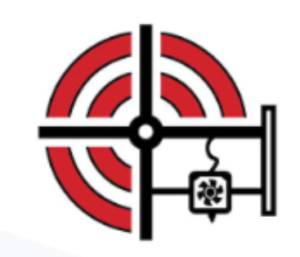Chinese filament supplier Polymaker is expanding more into professional filaments. More functional, higher margin materials are currently growing as users require better performance, and more desktop 3D printers end up in the hands of companies. Makers are now doing more demanding, technical projects and are less concerned about purple PLA with sparkles and more with properties like strength. Companies, meanwhile, want to do specific tasks with desktop machines. Given how cheap good machines are now, the number of companies and tasks are expanding. Companies are looking beyond PLA to engineering plastics more familiar to them already. In other cases, the firms need a certain strength, capability, or certification to succeed. Given the overall low part costs, especially when compared to those of outsourcing to services or using expensive machines, they don’t mind material cost so much.
To meet this demand, Polymaker is now releasing Fiberon PA612-ESD. This is a Nylon 612 (PA 6/12, polyamide 6/12), a copolymer that is meant to be a “best of both worlds” material of the popular PA6 and PA12 materials. While being relatively inexpensive, it should have excellent mechanical strength with less moisture issues than PA6. The material has been filled with carbon nanotubes to give it ESD properties.
The company says that,
“ESD filaments are growing in popularity as more electronics producers are adopting 3D printing in their manufacturing processes. We see Fiberon PETG-ESD as one of our top performing Fiberon materials, especially in the European market. PA612-ESD offers more tensile strength, more heat resistance and more stiffness compared to PETG-ESD to fill the need for more demanding jigs and fixtures, with the heat deflection point of 157°C being the most critical for oven ready jigs.¨
ESD safe prints would be very desirable in the automotive industry but especially the electronics industry. Broader still, these materials are in demand in machine tools, production lines and automation generally. In many companies, a lot of the total 3D printing capacity is used for making housings and enclosures for impromptu devices, and prototypes for use during the development stages of a new product. Here, ESD materials are also used very broadly and consistently.
Polymaker says that Fiberon PA612-ESD has a Heat Deflection Temperature (HDT) of 157°C, and that it would be good for applications such as PCB manufacturing, jigs, and screens. For support, it can be used along with Polymaker´s PolySupport for PA12. The company also says that ESD performance is increased when printed at 300–320°C
In jigs and fixtures, we’re seeing the quickly expanding use of desktop 3D printers in companies. I know of many firms that are buying 5, 10, or even 20 machines to aid production and maintenance teams. A lot of firms don’t have internal Thingiverse-like tools for sharing files, and training is often quite improvisational. In spite of this, the growth here continues. It just makes a lot of economic sense to invest in reducing uncertainty and speeding up the fixing of potential manufacturing delays and interruptions. Business cases for desktop 3D printing were often hard to put together. Developing an airtight system for secure file sharing and printing with the right settings were onerous tasks as well. Companies often wanted to integrate 3D printing with PLM or things like Sharepoint for file exchange. This made programs with a difficult to calculate return seem very uncertain and expensive.
Now with desktop machines that are more reliable, companies are simply buying one or two machines and using them mostly locally. Then within a few fixtures, the system will prove itself. Subsequently, the firm will buy more systems. Because they work for a few years and require little in the way of software licenses or maintenance, they don’t need a lot of follow on budget. Once the printers are in use, that usage expands. This is something that was desired before, but only now has it gotten less expensive to do. Lower risk, lower cost 3D printing adoption by businesses is a boon to us all. New materials such as this one by Polymaker should continue to do well, and enable more parts to be made inexpensively by more companies.
Subscribe to Our Email Newsletter
Stay up-to-date on all the latest news from the 3D printing industry and receive information and offers from third party vendors.






